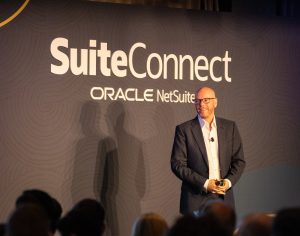In my capacity as co-founder of EnterpriseJungle and as a UNICEF UK business mentor, I spend my life immersed in entrepreneurship and, in particular, technology and innovation. Over the last few weeks, I have been exposed to more than my fair share of big, slow, expensive technology solutions as well as small, agile and cost-effective ones. Finally, the wind direction seems to be changing in favour of the latter.
Historically, big companies tend to think that a big solution costing big bucks can make a big difference. I am sure the corridors of many businesses on both sides of the Atlantic and corporate HQs are littered with ill-fated projects that were doomed before they were ever deployed.
Dan Ward, a thought leader on innovation who specialises in leading high-speed, low-cost technology development programs for the US Air Force, put it perfectly when he said, ‘speaking as a customer, I prefer to work with companies that deliver, preferably in my lifetime.’ His point is why spend millions on a complex, large solution that takes years to build and may never make the starting line, let alone achieve the desired outcome?
Consider Lorenzo, the recently abandoned NHS patient record system that cost over £10bn. It was one of the worst and most expensive contracting fiascos in the history of the UK public sector. Or consider the US Air Force’s fighter jet, the F-22. The initial requirement was written in 1981 to develop an air superiority fighter to counter the Soviet air threat. It was declared operational in December of 2005, 24 years later and 14 years after the USSR collapsed. These were unfathomable disasters and proved that big is not always beautiful.
My view is that the standout, transformational ideas come from an open-ended starting point. Even those big business solutions probably started from the all-important ‘identification of needs’. Perhaps they evolved a little slower – their pace dictated by scale of investment required – but it’s a straightforward premise nonetheless.
As a result, we are now asking the same question in different ways. There’s a need to solve child poverty in the case of UNICEF or find out who knows what in a large company in the case of EnterpriseJungle. But how? In the forward to his new book The Simplicity Cycle, Ward hits the nail on the head: “Complexity is often necessary but unnecessary complexity complicates our lives. How we can strike the proper balance?”
Come together
EnterpriseJungle is an SAP partner. Software giant SAP’s size and our agility leveraging its HCP platform is a win-win for us, them and our respective customers. Think of it like this: we build the cars to get from A to Z – solutions for customers – whilst SAP builds the roads to travel on – the infrastructure and security that makes it possible. It’s a match made in heaven.
Need to find an influencer within 100km who speaks French, has an MBA and knows the board of Disney? Use our Who Can Help Me? tool. Want to ask your colleagues for a recommendation for a company that worked on the Rio Olympics, has an office in South Korea and speaks English? Pose the question and get the answer in Enterprise Q&A.
These are all living products that allow other people, the end users, to solve their own problems – rather than us or corporate HQ solving them. Top-down problem solving doesn’t always work.
The week I met SAP’s CEO Bill McDermott also marked the launch of UNICEFs Innovation Fund in New York. I was amazed to learn that in Rwanda someone can tell you how many pregnant women there are at the touch of a button when no-one could tell you that in the Department of Health in the UK. I learnt how the creative use of the Raspberry Pi, a tiny computer that costs about £30, is transforming education by teaching Syrian refugee children in an overcrowded Lebanese education system.
James Cranel-Ward is a technologist in UNICEF’s innovation section where they use private sector knowledge to assist UNICEF with its projects. Ward had a couple of Raspberry Pis on his desk. One day his boss walked by and asked about them. James gave a demo and a plan was hatched to solve a big problem – and faster, better and cheaper.
There’s a long list of very real and practical challenges that UNICEF’s mandate, scale, global presence, reach, inter-governmental position and amazingly talented teams on the ground can solve but partnering with innovators from outside its ecosystem fast-tracks solving real problems at a low cost.
It’s not surprising that it can be easier to make change or move faster from the outside. Companies that have been around for a long time likely have a culture that has been around a long time too, and that might be a hindrance to what they are trying to achieve. Someone free of the baggage has a clear run at things without being slowed by unavoidable legacies.
Given the speed of change and the shifting sands of the business landscape, large, slow projects risk being doomed from the outset. No longer must we have huge teams of people and huge infrastructure to drive change and efficacy. With the right attitude, needs-based, insight-driven tech from agile innovators can allow even the most institutional of organisations to flourish.
In fact, maybe there is an opportunity for a new role within big corporate entities: not CEO but CQA. Chief question asker. Unencumbered by company culture, they are a challenger of the status quo, unaccepting of processes and procedures just because ‘that’s how we’ve always done it.’ It’s a role for the brave; a role for the future. ![]()
Share via:


















































